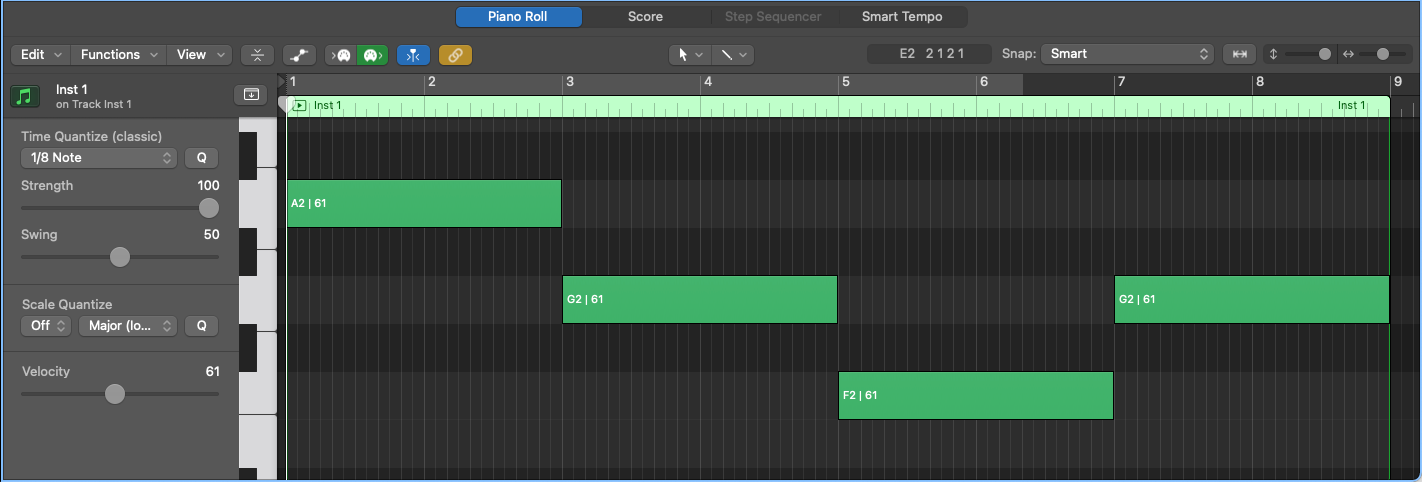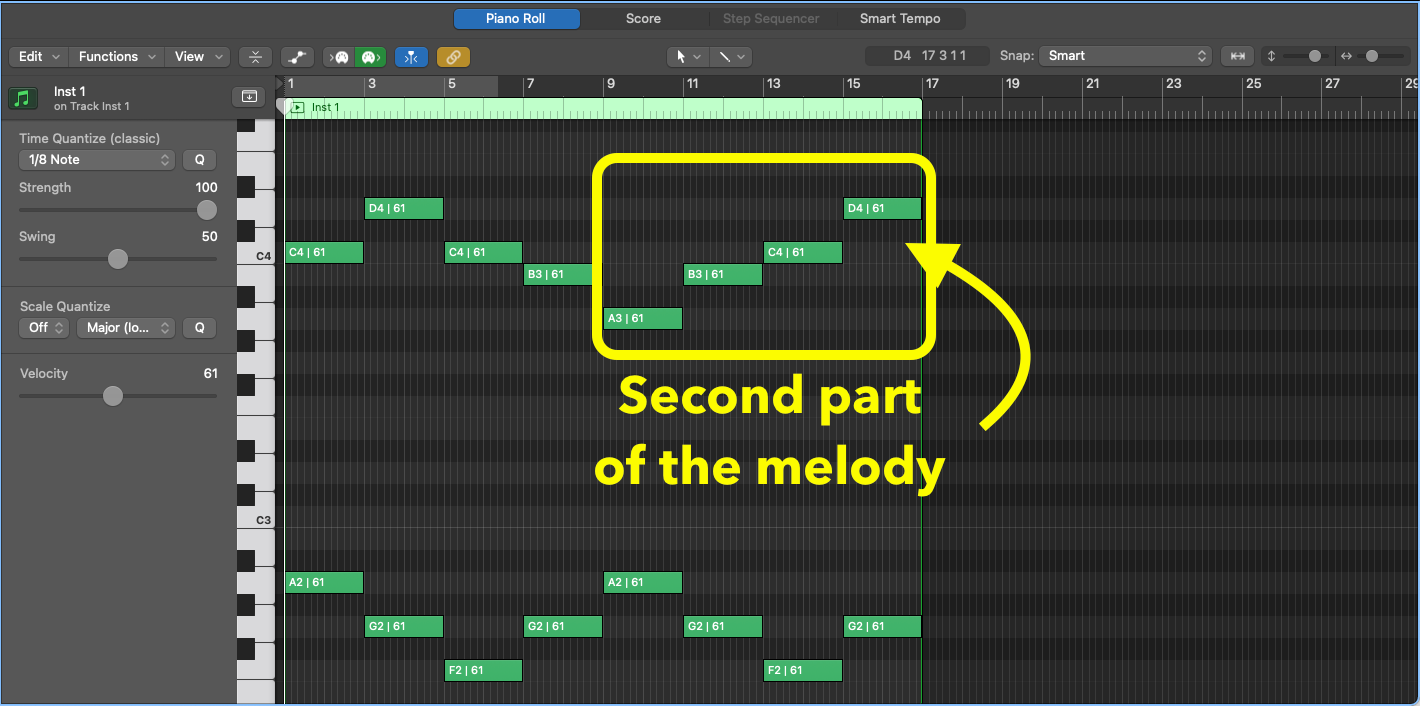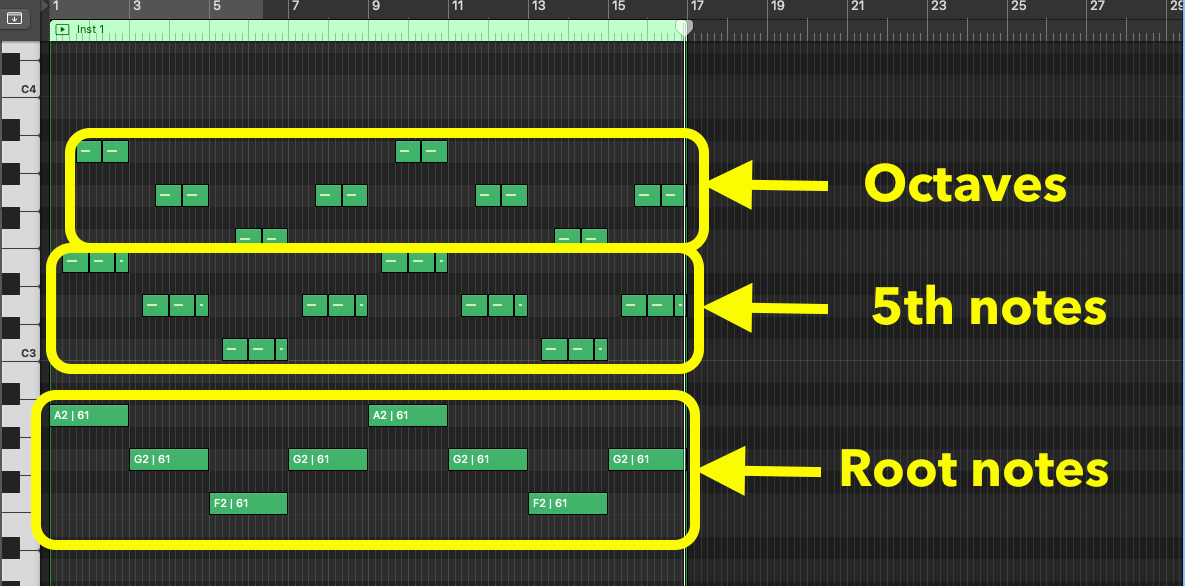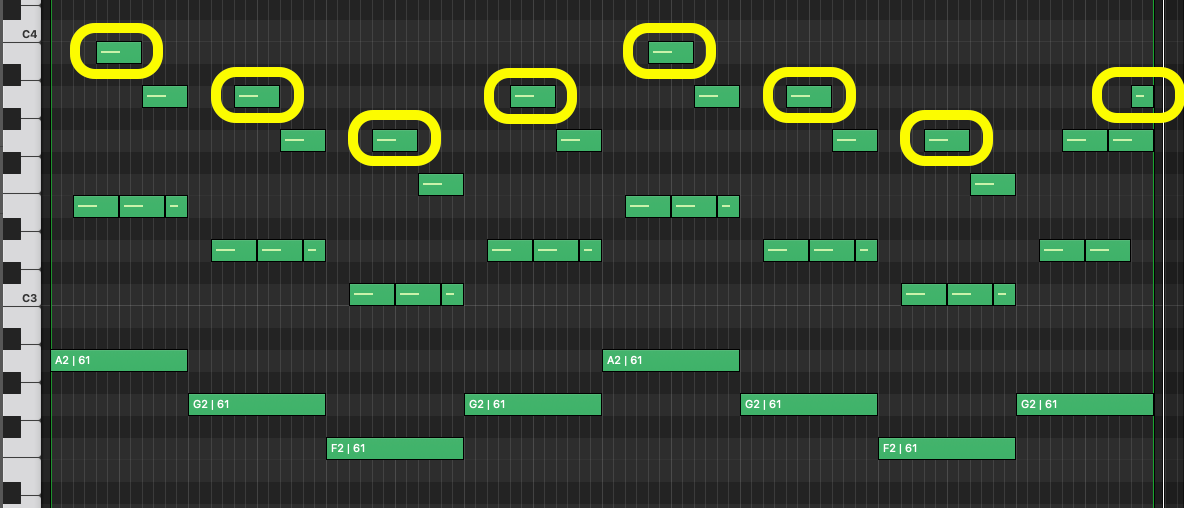It's one thing to load up a piano VST and get it to play along with the melody of your piece of music.
It is another thing to make it sound interesting and "pianistic"...written to sound like a piece of piano music.
That's what I want to show you in this article, how to make your piano music sound more interesting and generally more awesome!
It doesn't matter if you are writing a piece of solo piano music or just trying to come up with an interesting melody line for the piano in your track.
These tips are going to help you write better piano music across the board.
Choose your Chord Progression
The first step is to choose a chord progression for your piece of music.
You may have already got an existing piece of music that you are writing the piano line for. In which case just to the next step.
If you are starting from scratch then I suggest you take a minute to come up with a chord progression that you like and fits the mood of the music you intend to write.
For this example, I am going to opt for a progression in the A minor key that has enough major chords in it to still feel hopeful despite being in a minor key.
| Am | G | F | G |
Now I have my chord progression chosen I can move on to the next steps.
1. Start with a Simple Bassline
This might sound obvious but starting with a simple bassline can really help when it comes to writing the melody and counter-melody.
Note: If you have your simple bassline already then jump to the next section.
To keep things simple suggest you start with choosing the root notes of your chord progression, which in this case is A G F G.

It is as simple as that at this stage. Don't overcomplicate matters, we just need a bassline to give us a foundation for our track.
2. Create a Single Melody Line
When it comes to good, catchy melodies I always suggest that you stick to using the notes of the chord to start with.
The reason is that it limits our choice and limitations are a good thing. When we limit our choices we are forced to make a decision more quickly.
Note: If you have a simple melody already then jump to the next section.
So our choice of notes is based on our chord progression of Am G F G.

So as you can see, we could of course have the melody following the bassline but at this stage, that might sound a bit dull so let's choose some "random" notes - C D C B

Let's hear how that sounds with the bassline.
This sounds great as a start but I like my melodies to be a bit longer so let's double the length of it and change the notes we choose the second time around to A B C D.

At this point, you may be thinking, "Hold on Rich, I can do this".
And you may be right but I need to make sure that we are all up to speed.
3. Add movement to your bass
This is when we add the "pianistic element".
One of my top tips for getting a more realistic piano sound is to think in terms of two hands.
With this movement in the bassline, we are focused on the left hand which is now going to start adding some more interesting movement.
To keep it simple and frankly, to make your piano chords sound better I am going to use 5th chords; the Root note, the fifth note in the scale above that, and then the octave of the root.
Using this 5th chord I am going to play the root note of the chord and then go between the 5th note and the octave.

You do not have to stick to the exact pattern I have chosen but I do suggest at this stage keeping it simple and sticking to the notes of the chord.
4. Add Movement to Your Melody
We have already written an 8-bar melody at this stage which is great but it sounds a little dull.
To make it sound more interesting I am going to add extra chord tones just before the next notes of the melody.
It sounds a lot more complicated than it actually is.

This already sounds much more interesting.
But I don't like the predictability of these extra notes. So I am going to change when some of them happen.
I am also going to take the last notes of the melody and add a little staircase movement downwards.

There, I am happy with that. Just a couple of small changes to the timing of the notes and adding a small flourish at the end of the melody can make a huge difference.
5. Develop The Harmony
Now that we have made the melody sound much more interesting we are going to do something similar to the bassline; change some of the notes to make the harmony more full and varied.
For starters I am going to keep the root notes the same, and probably keep the 5th notes the same - I am only going to change the octaves. They are repeating the root after all.
Again, keeping it simple and making sure it is still playable with a left hand am going to make sure that I do not move the octaves any further than two notes up.

As you can hear, this sounds a lot more interesting and dramatic.
At this point, depending on what I wanted the piano to do, I could have scrapped the 5th chord movement and changed it to the left-hand playing triads.
But the main point of this step is to move a few of the notes in the bass and lower harmony to make them sound more interesting and fill out the harmony a little bit more.
5 Steps on Repeat
The wonderful thing about these 5 steps that I have shown you is that they can then be repeated over and over to develop the melody and harmony of your track very quickly and easily.
This is how I have gone about writing almost all of my piano music that has been used on TV, movie trailers and Video game trailers.
In fact, it is how I go about writing neoclassical music for string quartets too.




